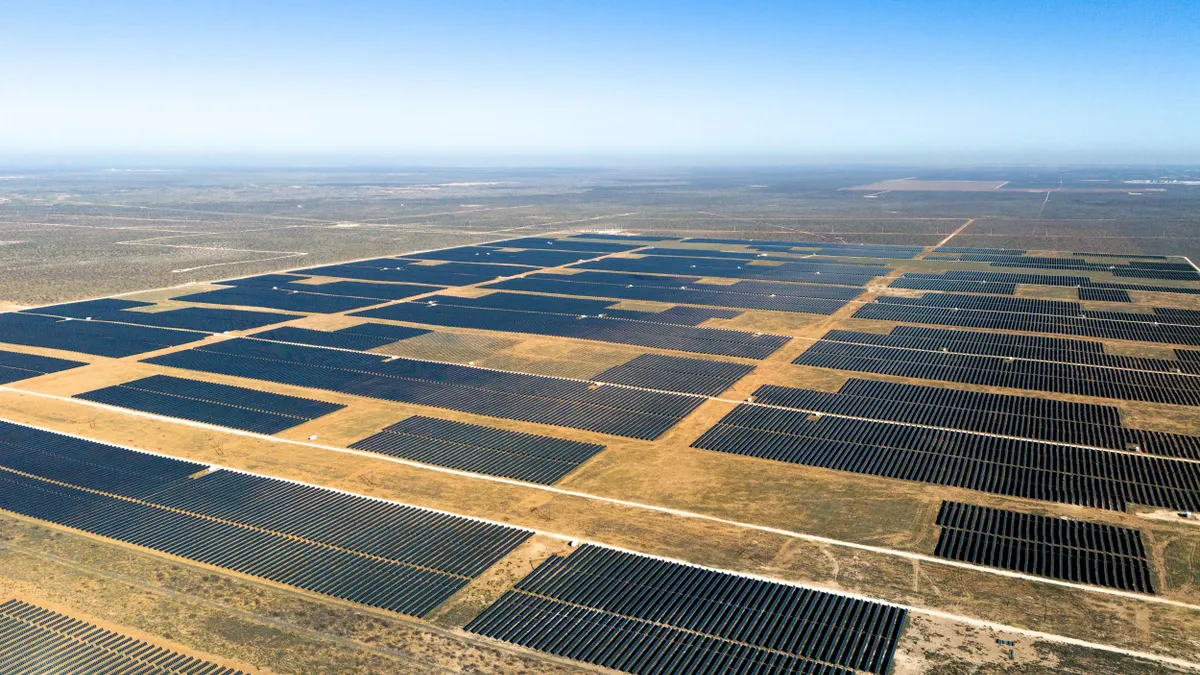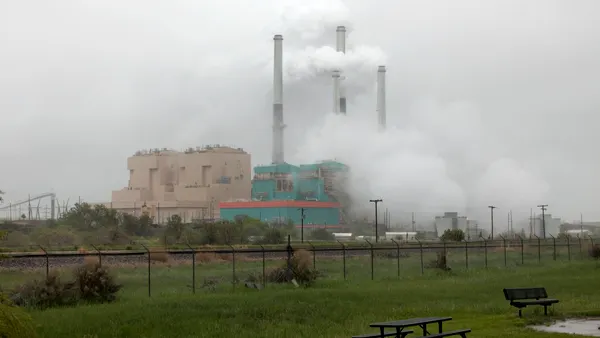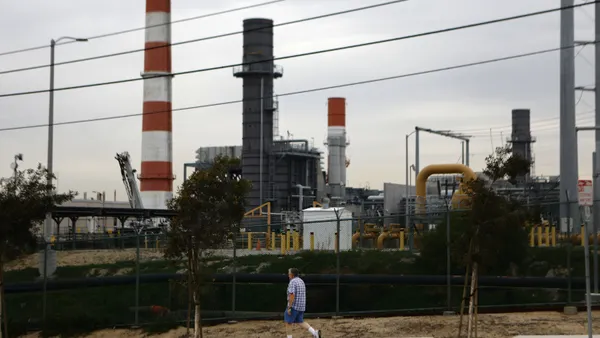Dive Brief:
- The United States added more than 15 GW of new electricity generation resources between January and May this year, led by 11.5 GW of solar, followed by 2.3 GW of wind and 1.3 GW of gas, according to the Federal Energy Regulatory Commission’s monthly infrastructure report.
- The report shows that despite actions the Trump administration has taken to slow or halt renewable energy projects, solar and wind continue to make up the vast majority of new electrons on the grid.
- Gas still constitutes 43% of the country’s total generating capacity, according to the report. Coal is just shy of 15%; solar is a little over 11%; wind is 11.8%; and nuclear is 7.7%.
Dive Insight:
The latest infrastructure report, which covers January through May, predates the passage of the One Big Beautiful Bill Act, the Republican domestic policy megabill that stripped away tax credits for renewable energy. It also predates several stop-work orders the administration issued to wind projects and new guidance from the Treasury Department that could further restrict the growth of renewables.
Still, the report highlights the scale of the solar and wind project pipeline at a time when the country’s hunger for energy is growing. It also suggests the trend will continue.
Out of 133 GW of “high probability” additions expected to come online by 2028, FERC projects that 84% will be from solar (90 GW) and wind (23 GW). Gas is projected to make up about 20 GW — just 15%.
“This reaffirms what we’re seeing in the market, which is solar continues to deliver new power to the grid faster and cheaper than any other source of electricity,” said Stephanie Bosh, senior vice president of communications for the Solar Energy Industries Association. “Despite the Trump administration putting its thumb on the scale to slow solar down, the American people are demanding low-cost, reliable power, and solar is stepping up to meet that demand every day."
According to the nonprofit Sun Day campaign, solar has been the largest source of new generating capacity added each month for 21 consecutive months, since September 2023.
The organization also said in a statement that at least 25%-30% of U.S. solar capacity comes from small-scale systems, such as rooftop arrays, that are not included in FERC’s data.
“Including that additional solar capacity would bring the share provided by solar + wind to more than a quarter of the nation’s total,” it said. Including hydropower (7.7%), biomass (1%) and geothermal (0.3%), “renewables currently claim a 32% share of total U.S. utility-scale generating capacity.”
The FERC report does not track battery storage or small-scale solar.
In addition to new generation, the grid saw 244 miles of new transmission lines reach completion, including 160 miles of 345 kV transmission built in Colorado by the Public Service Co. of Colorado.















